By Jeffrey A. Barash
It is gratifying to read the insightful responses to the analyses in my recent book Collective Memory and the Historical Past presented in the inaugural book forum of the JHI Blog. I would like to express my heartfelt gratitude to each of the five guest contributors, Asaf Angermann, Andrew Dunstall, Nitzan Lebovic, Sophie Marcotte Chénard, and Michael Meng for their thoughtful comments and, above all, to John Raimo, whose inspiration has played an admirable role in the forum. Each of the contributors introduces into the discussion critical insight that deepens understanding of the topics my book addresses and encourages further thought on the issues it raises. In the space of this short response, I will draw on the analyses presented by each of the reviewers and answer critical reflections they have expressed.
According to my interpretation, all memory in its original form pertains to the personal sphere. Original remembrance, in this sense, arises from experiences in the everyday life-world, from face-to-face encounters “in the flesh,” that may be shared by smaller and larger groups and communicated to those who have not directly witnessed them. According to the phenomenological vocabulary I employ, the originality of remembered experience “in the flesh” does not reside in a capacity to replicate or to furnish a “faithful” representation of reality. Since, indeed, remembrance of direct encounters is selected, organized, and retained or omitted in relation to the perspective of the viewer, its originality lies in the fact that it is necessarily presupposed as a source of indirect accounts that derive from it. As Angermann has perceptively noted, any “second-order representation precludes the aura of a singular presence encountered in the plenitude of a surrounding ‘lifeworld,'” and the singular presence of such direct encounters, as they are remembered and communicated, are indispensable (if not always reliable) sources of what we commonly take to be reality. At the same time, where remembered experience is shared by groups, such “collective memory” never exists independently of individual persons who remember, any more than, beyond them, it has an autonomous, substantial being.
In general, remembered experience in its original form, arising from personal and group encounters, rarely derives from what is held to be significant in the public sphere. In normal circumstances, only a handful of agents and witnesses have direct access to what is publicly meaningful and, consequently, experience and remembrance of events endowed with public significance are almost always based on indirect accounts diffused by the organs of mass information. This distance of the public sphere from the everyday life-world proves highly paradoxical: indeed, in view of the indirect quality of representations of the public sphere, we might wonder whether the concept itself of “collective remembrance” is appropriate when applied to public existence in mass societies. It might indeed be claimed that collective memory of publicly significant events, since it rarely corresponds to any direct and original form of remembrance, is essentially a figment of the social imagination.
In light of such a claim, however, we must clarify what we mean when we speak of “imagination.” According to an argument presented in my book, imagination is not only a faculty for producing fictions or fantasies, or for eliciting abstract mental activity, for it also enables the embodiment of meaning in concrete, communicable images and symbols. I take symbols in the broadest sense to refer to the meaning we confer on experience by lending it, as Dunstall notes, “communicable order at the primary level of its organization and articulation.” A many-layered network of symbols permits us to spontaneously lend spatio-temporal and conceptual pattern to experience and to orient ourselves in the everyday life-world. Where the symbolic order is not actively engaged, it is passively retained in memory. Before any act of reflection, it is this concrete symbolic order that permits us to discern in an urban setting the difference, for example, between a private yard, a semi-private shopping mall, and a public park, just as the music we hear in supermarkets or airports provides symbolic indicators of the social context in which we find ourselves. As retained by different groups in a mass social framework, the network of sedimented and stratified symbols by no means forms a monolithic or uniform block, since symbols are embodied in accord with the fragmented perspectives of groups that deploy them.
Beyond the purview of ordinary everyday life, it is the complex weave of symbolic structures embodied in memory that permits us to render intelligible a world of publicly meaningful events. When beheld in this broad perspective, collective memory, as Dunstall insightfully points out, is “neither a fiction nor a mere metaphor, but refers to a web of symbols formed through communicative interaction, reaching as far as that sphere of interaction does.” As Angermann perceptively notes, this interpretation of the life-world as symbolically mediated distinguishes my position from Husserl’s presupposition that the life-world is immediately intuited. It indicates a possible affinity between my interpretation and Adorno’s critical stance regarding Husserl’s conception of the life-world. Nonetheless, my concept of symbolic mediation is most directly inspired by Cassirer’s interpretation of the symbolic configuration of spatio-temporal and conceptual order and by Goodman‘s theory of the symbol in Ways of Worldmaking.
In a suggestive remark, Meng has identified this interpretation of the sedimented, stratified, and fragmented weave of embodied symbols with an “anti-foundationalist” position associated with Arendt and later authors, who questioned the traditional role of absolute and indubitable foundations. My interpretation of the contingent basis of experience and remembrance in the everyday life-world, and of its tenuous relation to the socio-political realm, bears an affinity with this position, and I share with Arendt the further conviction that the coherence and consistency of the vast contextual web that undergirds interpretation is the primary source of our beliefs concerning the veracity of factual accounts of what transpires in the public realm (Hannah Arendt, “Truth and Politics,” Between Past and Future: Eight Exercises in Political Thought, Penguin, 1977, p. 227-264).
My efforts in the second part of Collective Memory and the Historical Past aim to understand this contextual web of embodied symbols in relation to the “temporal articulations” of collective memory. Here, beside the collective forms of remembrance punctuated by habitually enacted temporal patterns of everyday life—the rhythms of work days and holidays, market days, hours of work, recreation, and sleep—and by the recurring commemorative practices that reinforce collective cohesion, we encounter the deep levels of collective existence. These are the passively deposited and often barely palpable dispositions—the êthos or habitus—which, as Dunstall reminds us, articulate “long-term continuities in the symbolic reservoir upon which collective memory draws.” The profound resonance of Martin Luther King Jr.’s “I have a Dream” speech derives its potency from the symbolic charge, however differently it may be perceived from a variety of group perspectives, rooted in the political pronouncements of Lincoln and of the Founding Fathers and in the theology of Isaiah and of Luke. Over the course of generations, King’s message, which was hotly contested in many southern states and sharply criticized by FBI director J. Edgar Hoover, won approval among the citizens of the United States to such an extent that the birthday of Martin Luther King Jr. became the day of national commemoration we now celebrate.
Long-term group attitudes, styles, and dispositions span all reaches of the public sphere and, for the most part, spread over the implicit layers of group life. If they often go unnoticed, they are not, however, invisible occult qualities, nor are they reducible to general laws governing unconscious psychic mechanisms. Specific to the particular mode of existence of a given group, these passive symbolic configurations come to expression in group behavior and social styles that, as sociologists and anthropologists have pointed out since the work of Mauss and Bourdieu, often correspond to corporeal dispositions and habits. The continuities interwoven by this deep level of passively inscribed dispositions, as they draw on the reservoirs of sedimented group experience that have been symbolically elaborated over the long term, are not to be confused with secondary elaborations, such as codified traditions or cultural legacies which, indeed, presuppose this fundamental experiential dimension.
In our contemporary world, the emergence of mass societies in a context of global interaction marks an essential break with the past that distinguishes the current horizon of group interaction from previous forms of social existence. Corresponding to this development, the public sphere has undergone essential metamorphoses over the past century and a half that have been channeled by the technical evolution of the mass media. Their increasing predominance as organs of public information has tended to accentuate the disparity between the life-world of original personal and small-group experience and remembrance, and the vast public realm that the mass media configure. The development of the mass media since the introduction of mass-circulation illustrated newspapers and magazines that exercised a preponderant influence in the late nineteenth and early twentieth centuries began to transform the public sphere through their ways of configuring and transmitting information and thus of conferring public significance on reported actions and events. This transformation was further accentuated through mass-produced images favoring communication that, independently of the articulated language they accompany, spontaneously convey a visible message that can be immediately grasped beyond the confines of linguistic or cultural borders. From the development of the still photo and the moving picture newsreel to that of television, animated digital imagery and the World Wide Web, the mass media, whatever their distance from the life-world, have been able to simulate, in an ever more technically precise manner, direct experience of personal and small-group encounters and to make this simulated experience resonate in public memory.
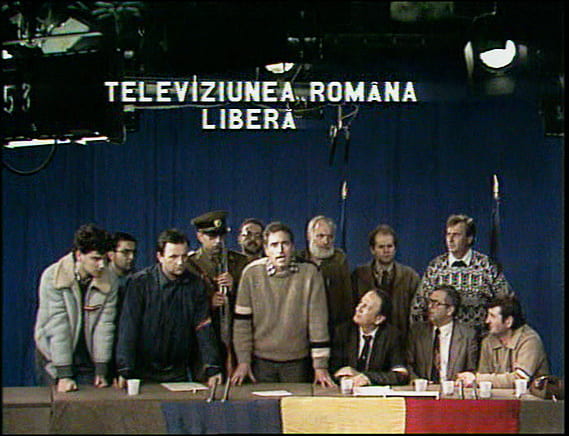
The radical transformation that mass media communications have brought to the public world may be placed clearly in relief if we consider that its potency is not the result of a simple reproduction or replication of what transpires in the everyday life-world of face-to-face encounters In an ever more technologically precise manner television, in CNN fashion, presenting ‘hypermediated’ combinations of written text and visual image and, subsequently, hypermediated World Wide Web and social media Internet displays, transfigure reported information in function of a spatio-temporal pattern and logical order specific to the mass media format. This format, which I explore in detail in my book, imposes decontextualized, anonymously configured, and continually shifting, “updated” schemata of media events that take precedence over the contextual logic of experience and remembrance serving as the principal mode of orientation in a shared common life-world. This format of mass communication has become the principle contemporary source of public visibility, indeed of an iconic status which, as publicly conveyed and remembered, is readily translated into novel contemporary forms of public influence and political power.
In his highly suggestive and thought-provoking analysis of my interpretation, Lebovic finds that the chapter on the mass media “is the most relevant part of the book, but also its least convincing section.” Where he agrees with my critical appraisal of the mass media in its distance from the everyday life-world, Lebovic finds that in this instance the “modernist tools” of my theory of collective memory seem to falter. He concludes that in the “age of fake news perhaps not only the past is undermined, but the present and, as such, the future too.”
Without delving into the problematic presuppositions engaged by the label of “modernism,” which remains to be clarified, I can express my sympathy with Lebovic’s pessimism in view of the plight of the contemporary public sphere. As an apparent consequence of this antiquated status of modernism, however, does this pessimism invariably signal the demise of the ideal of informative and impartial reporting that however imperfectly flies in the face of complacent conformism in denouncing the distortion of factual events upon which “fake news” is based? As I interpret it, the exercise of contextual analysis still has an eminently critical task to fulfill where it sets its sights on long-term developments and explanations in which fragmented perspectives are confronted with one another and their claims to legitimacy set in critical relief
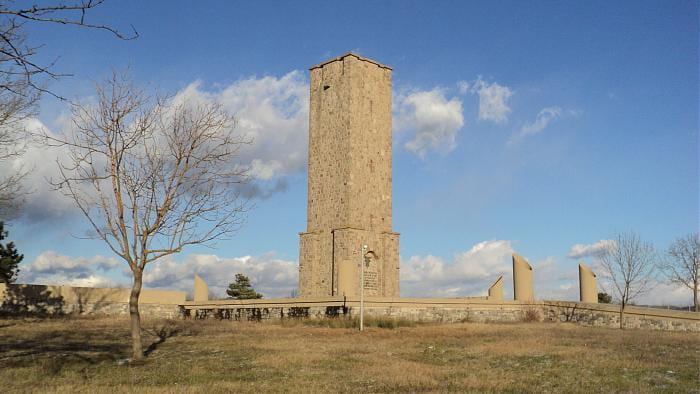
In her insightful contribution to the discussion, Marcotte Chénard highlights the distinction which I draw between collective memory, rooted in the deep strata of symbolically embodied, collective patterns of existence, and the historical past that reaches beyond the scope of all living memory. If, indeed, collective remembrance of the past is always fragmented in accord with a plurality of different group perspectives, public communication depends upon a web of spontaneously graspable symbols that defines the contours of group contemporaneity shared by overlapping, living generations, and distinguishes them from the historical past beyond all living recollection. The discontinuity marked by the demise of living generations does not simply result from the disappearance of single individuals and groups, for this disappearance also signals the evanescence of the concrete context in which their symbolic interaction transpired. Following the disappearance of this theater of group interaction, the legibility of the symbolic structures embedded in it begins to weaken. Even where the broad intelligibility of general linguistic and other symbolic categories is retained over centuries, the more specific nuances groups invest in them—constituting the living context and intrinsic sense of their coexistence—remain subject to remarkable if often barely palpable variability as collective memory recedes into the historical past. In a situation of radical discontinuity, the passage of each successive generation marks a drift in the symbolic framework of communication and interaction. Such an abrupt change in context, calling forth mostly imperceptible displacements of its passive recesses, casts in its wake a deepening shroud over the essential significance of the symbolic patterns constituting the past’s singular texture.
Here, indeed, lies the hidden ground of what I conceive to be the finitude of group perspectives which is first and foremost set in relief by the passage of the collective memory of living generations into the historical past. This passage is the primary source of human historicity. The cohesion of group perspectives and the finitude of their scope ultimately depends not on the singular finitude of mortal beings, but on the mobility of the intermediary symbolic space underlying group existence.
As Marcotte Chénard insightfully portrays my argument, finitude in this sense by no means condemns present generations to ignorance of the “reality of the historical past,” but it incites us to great prudence in the interpretation of the past’s singular texture. The capacity to retrieve this singularity depends not only on correct factual analysis, but at the same time on the capacity to retrieve symbolic nuances that permit us to discern the shift in temporal horizons through which facts draw their implicit sense. As I have attempted to illustrate in my book by means of the works of Walter Scott, Victor Hugo, Alessandro Manzoni, Ivo Andrić, Marcel Proust, and W. G. Sebald, such shifts may be placed in relief not only by works of history, but by the “historical sense” that novels are able to evoke.
Marcotte Chénard suggests certain affinities between my conception of the historical past and what Hayden White, following Oakeshott, has characterized in a recent work as the “practical past.” The practical past is, as she notes, distinguished from the theoretical concern for the historical past, which as a theoretical construct, “possesses no definitive existence” and is only an “inference that the historian makes in order to understand and explain what happened.” In its distinction from this theoretical concern, the practical past presents us with modes of orientation “toward matters of practical conduct and representation of our social and political world.” It is essentially identified with its use in the present: indeed, in this sense, Oakeshott in his original understanding of the term equated it with the “useful” past, concerned less with traces and vestiges of what previously existed than with a storehouse of relics and “emblematic tropes” available for recycling in the present (Michael Oakeshott, On History and Other Essays, p. 41-42). This conception of the practical past, however, raises the essential question: what possibility does it afford of accomplishing what I take to be the principal task of the “historical sense,” which may bring us to discern timely assumptions that prevail in the present that blind us to past’s unique contextual contours and symbolic nuances? In a present in which these assumptions exercise an often tacit and unquestioned supremacy, painstaking and fastidious research into the remote past beyond all living memory, which cannot be assessed in terms of its pragmatic value, nonetheless allows us to cast the present in an original light. Here the work of Frank Ankersmit, above all the concept of “historical experience” he elaborates in his book Sublime Historical Experience (Stanford University Press, 2005), provides penetrating analyses of the possibilities of relating the present to the historical past.
In one sense, there is an affinity between Marcotte Chénard’s description of the concept of the practical past and what I take to be the historical past, notably where the practical past might lead us to “reactivate neglected past experiences or past concepts in order to challenge dominant views.” In an interesting manner, she associates this possibility with Lefort’s suggestive conception of the impensé (the “unthought”) elaborated in his analysis of Husserl and Merleau-Ponty (Claude Lefort, Sur une colonne absente. Écrits autour de Merleau-Ponty, p. 16-17). As Marcotte Chénard construes this conception in applying it to historical interpretation, the “unthought” is what remains to be thought in past “events, social symbols or shared experiences” that “carry vast reservoirs of meaning.” The unthought aspects of the past hold out the possibility, not only of making unexpected discoveries in the past but, through these discoveries, of rethinking what generally remains unquestioned in the present.
As I interpret it in conjunction with this suggestive idea, the historical past, in often surprising and unanticipated ways, holds up the prism through which the timely and contingent aspects of the present may be recognized as such. Current attitudes, according to this reasoning, find their source in a past that, even where neglected, forgotten or otherwise obscured, retains an essential pertinence for interpreting the concrete reality of the immediately given world and for projecting present action into an uncertain future.
Jeffrey Andrew Barash taught at the University of Chicago and Columbia University and he has served as Humboldt Fellow at the University of Bielefeld, Ernst Cassirer visiting professor at the University of Hamburg, as Hans-Georg Gadamer visiting professor at Boston College and Max-Planck Fellow at the University of Konstanz. In 2015-16 he was a member of the School of Historical Studies at the Institute for Advanced Study, Princeton. He is emeritus Professor of philosophy at the University of Amiens, France. His books include Heidegger et son siècle. Temps de l’Être, temps de l’histoire (Presses universitaires de France, 1995), Martin Heidegger and the Problem of Historical Meaning (second edition Fordham University Press, 2003), Politiques de l’histoire. L’historicisme comme promesse et comme mythe (Presses universitaires de France, 2004), and Collective Memory and the Historical Past (University of Chicago Press, 2017).
Featured Image: “Kosovo Maiden” by Uroš Predić (1919).

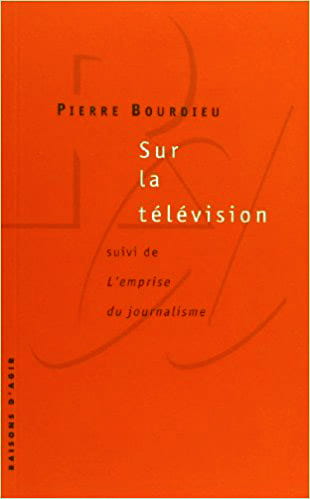
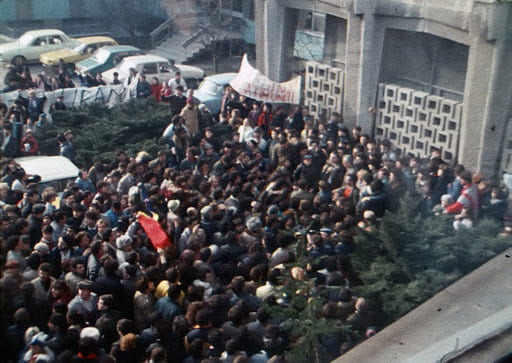
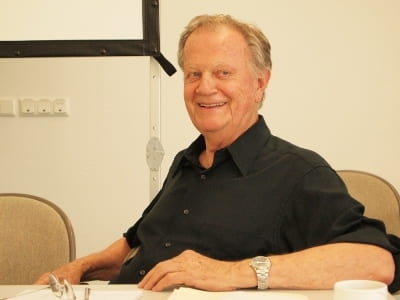



2 Pingbacks